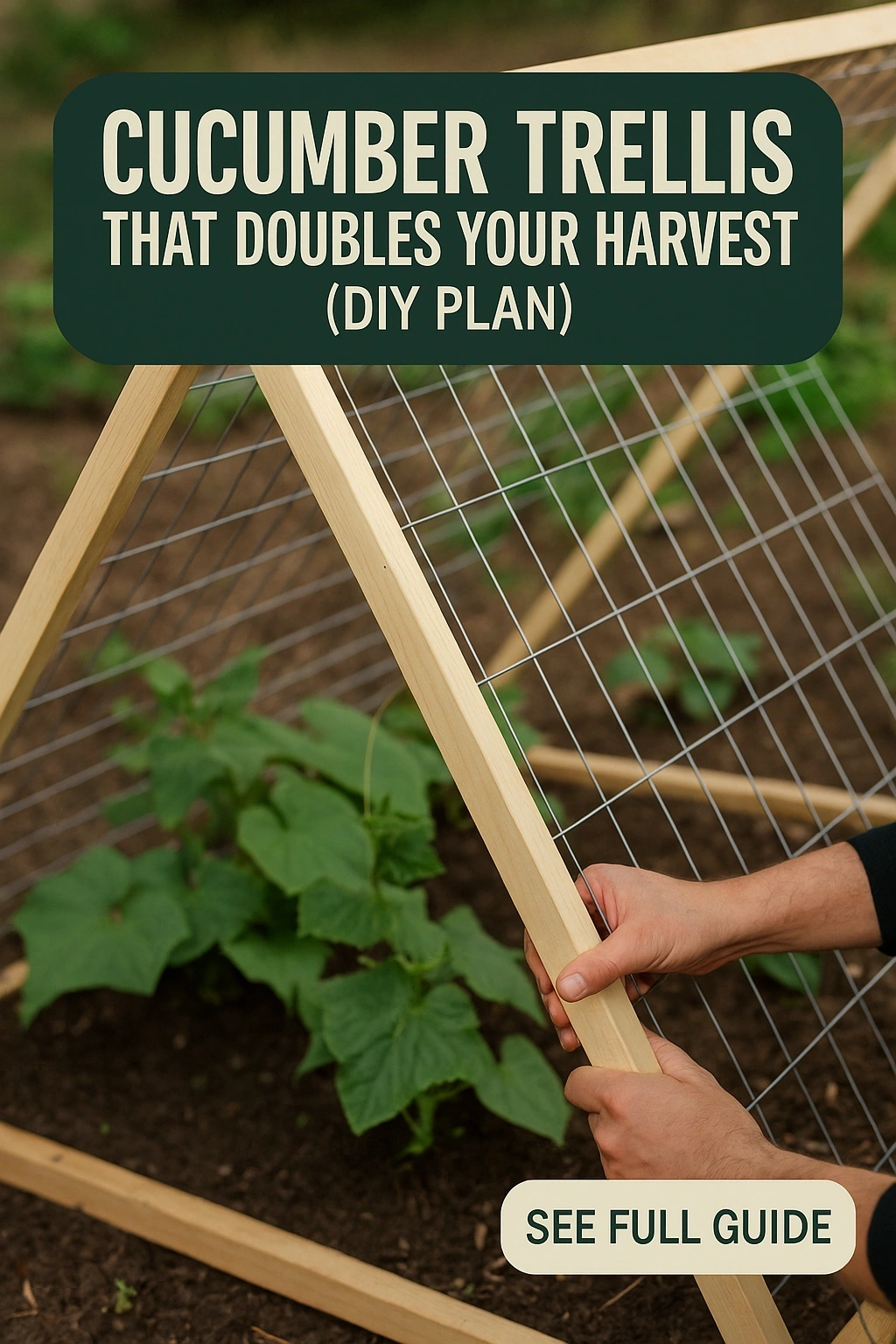
Are you looking to maximize your cucumber yield this growing season? A well-designed trellis can help you achieve just that while also saving space and enhancing the health of your plants. In this article, we will explore a detailed DIY plan for building a cucumber trellis that not only supports your plants but can potentially double your harvest. By following the steps outlined here, you will create a sturdy framework that allows your cucumbers to flourish and thrive.
Understanding the Benefits of a Cucumber Trellis
Before diving into the construction process, it’s essential to recognize the advantages of using a trellis for your cucumber plants. A trellis elevates the plants off the ground, offering several key benefits:
- Space Efficiency: Vertical growth saves ground space, allowing you to plant more cucumbers in a smaller area.
- Improved Air Circulation: Elevating plants enhances airflow, reducing the likelihood of diseases and pests.
- Better Sunlight Exposure: Plants grown on a trellis receive more sunlight, which is crucial for photosynthesis and fruit production.
- Ease of Harvesting: Cucumbers are easier to pick when they are off the ground, minimizing damage to the fruit.
Materials Needed for Your Trellis
Creating an effective cucumber trellis requires careful selection of materials. Here’s a list of what you will need:
Essential Supplies
- Wood or Metal Posts: These will serve as the main support structure.
- Wire or Twine: Used for creating the grid that will support the cucumber vines.
- Drill and Screws: For securing your trellis together.
- Measuring Tape: To ensure accurate dimensions.
- Level: To make sure your trellis is straight.
Step-by-Step Guide to Building Your Cucumber Trellis
Now that you have gathered your materials, it’s time to start building your cucumber trellis. Follow these steps to create a functional and durable structure.
Step 1: Planning the Design
Before you start assembling, sketch out your design. A simple A-frame or a vertical grid can work well. Consider the height and width based on your garden space and the cucumber varieties you plan to grow.
Step 2: Setting the Posts
Using your measuring tape, mark the spots for your support posts. The posts should be at least 6 to 8 feet tall. Dig holes for the posts, about 2 feet deep, to ensure stability. Place the posts in the holes, level them, and fill the holes with soil or concrete for additional support.
Step 3: Attaching the Support Structure
Once the posts are secure, it’s time to add the horizontal supports. Use your drill to attach horizontal beams between the posts. Ensure that they are evenly spaced to provide adequate support for the growing vines.
Step 4: Installing the Wire or Twine
Next, attach your wire or twine vertically between the horizontal supports. Space the lines about 6 to 12 inches apart. This grid pattern will help guide the cucumber vines as they grow.
Step 5: Planting Your Cucumbers
After your trellis is complete, it’s time to plant your cucumber seeds or seedlings. Space them according to the variety and ensure they are planted at the base of the trellis. As they grow, gently guide the vines onto the trellis to encourage vertical growth.
Maintenance Tips for Your Cucumber Trellis
Building the trellis is just the beginning. Proper maintenance is crucial for maximizing your harvest. Here are some tips to keep your plants healthy and productive.
Regular Watering
Cucumbers thrive in moist soil, so ensure consistent watering, especially during dry spells. Aim for about 1 inch of water per week. Watering at the base of the plants helps prevent fungal diseases.
Pest Control
Keep an eye out for common pests such as cucumber beetles and aphids. Implement organic pest control methods, such as introducing beneficial insects or using insecticidal soap, to protect your plants.
Fertilization
Feed your cucumber plants with a balanced fertilizer every few weeks to promote healthy growth. Look for fertilizers high in nitrogen, as this nutrient is essential for leafy growth, which supports fruit development.
Harvesting Your Cucumbers
As your cucumbers grow, it’s important to know when to harvest for the best flavor and texture. Generally, cucumbers should be picked when they are firm and green, before they become overly mature and yellow.
Signs of Ripeness
- The cucumbers should be about 6 to 8 inches long, depending on the variety.
- The skin should be firm and shiny.
- Harvest regularly to encourage more fruit production.
FAQs
What type of cucumbers are best for trellising?
Generally, vining varieties such as ‘Slicing Cucumbers’ or ‘Pickling Cucumbers’ are best suited for trellising. These types naturally climb and benefit greatly from vertical growth.
How tall should a cucumber trellis be?
A cucumber trellis should ideally be between 6 to 8 feet tall to accommodate the growth of the plants and provide ample vertical space for climbing.
Can I use a trellis for other plants?
Yes, many climbing plants, such as beans, peas, and tomatoes, can also benefit from a trellis. Ensure the structure is sturdy enough to support the weight of the mature plants.
How often should I water my cucumbers on a trellis?
Cucumbers typically need about 1 inch of water per week. During dry spells, check the soil moisture regularly and adjust your watering schedule as needed.
When is the best time to plant cucumbers for trellising?
Plant cucumbers after the last frost date in your area, usually in late spring when the soil temperature reaches at least 70°F (21°C) for optimal growth.
By following this guide, you can create a cucumber trellis that not only supports your plants but also enhances their productivity. With careful planning and maintenance, you can look forward to a bountiful harvest this growing season.
